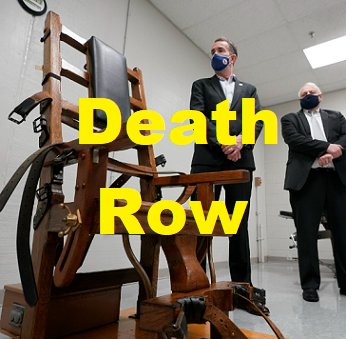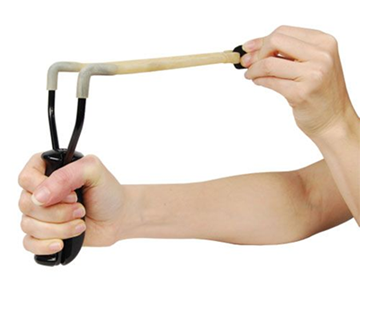Abolishing the Death Penalty: Safeguarding Innocence and Ensuring Justice
 The death penalty has long been a topic of debate, evoking strong emotions and moral questions about the sanctity of human life. While proponents argue that it serves as a deterrent and a just punishment for heinous crimes, there is a growing body of evidence that highlights a significant flaw in its administration: the possibility of sentencing innocent individuals to death. In this blog post, we will explore why the death penalty should be abolished, focusing on the alarming number of cases where innocent people were sent to prison and the harrowing possibility of an innocent person being wrongly executed.
The death penalty has long been a topic of debate, evoking strong emotions and moral questions about the sanctity of human life. While proponents argue that it serves as a deterrent and a just punishment for heinous crimes, there is a growing body of evidence that highlights a significant flaw in its administration: the possibility of sentencing innocent individuals to death. In this blog post, we will explore why the death penalty should be abolished, focusing on the alarming number of cases where innocent people were sent to prison and the harrowing possibility of an innocent person being wrongly executed.
The Fallibility of the Justice System:
The criminal justice system is a human-made institution, susceptible to errors, biases, and procedural flaws. Despite its best intentions, it is not infallible. The consequences of wrongful convictions are magnified when the death penalty is involved, as there is no room for rectifying mistakes once a life is taken.
- Examples of Innocence on Death Row:
Time and again, cases have emerged where individuals on death row were exonerated years, and sometimes even decades, after their sentencing. These cases serve as a sobering reminder of the human cost of capital punishment. Consider the following examples:
a) Cameron Todd Willingham: Willingham was executed in Texas in 2004 for allegedly setting a fire that killed his three daughters. Years later, scientific evidence proved that the initial investigation was flawed, and the fire was accidental. The execution of an innocent man is a tragedy that illustrates the potential irreversible consequences of the death penalty.
b) Anthony Ray Hinton: Hinton spent nearly 30 years on death row in Alabama for two murders he did not commit. In 2015, new ballistics tests exonerated him, demonstrating that the original forensic evidence against him was flawed. Hinton's case showcases the danger of relying on imperfect scientific methods and the urgent need for reforms.
c) Kirk Bloodsworth: Bloodsworth spent nine years, including two on death row, for a crime he did not commit. He was convicted of rape and murder but was later exonerated through DNA evidence. His case highlights the limitations of eyewitness testimony and emphasizes the potential for wrongful convictions, particularly in high-profile and emotionally charged cases.
- Systemic Issues:
These individual cases are not isolated incidents; they represent systemic issues that plague the criminal justice system. Inadequate legal representation, prosecutorial misconduct, flawed forensic science, false confessions, and eyewitness misidentification contribute to wrongful convictions. The risk of error is amplified in capital cases, where the stakes are the highest.
a) Inadequate Legal Representation: Capital cases require skilled attorneys with extensive resources and experience in complex litigation. However, many defendants facing the death penalty lack the financial means to secure competent representation, leading to subpar legal defense and a higher likelihood of wrongful convictions.
b) Prosecutorial Misconduct: The pursuit of justice should prioritize truth-seeking over securing convictions. Unfortunately, cases of prosecutorial misconduct, such as suppressing exculpatory evidence, coercing witnesses, or manipulating testimonies, have come to light. These unethical practices jeopardize the integrity of the entire justice system.
c) Flawed Forensic Science: The reliance on forensic evidence can be problematic when it is based on outdated methods or subjective interpretations. DNA analysis, for instance, has played a crucial role in exonerating many wrongfully convicted individuals. However, other disciplines, such as bite mark analysis and hair microscopy, have been discredited due to their lack of scientific validity.
The Impermanence of Mistakes:
While the exoneration of wrongfully convicted individuals is a testament to the power of perseverance and advancements in technology, it highlights a critical flaw in the death penalty's irreversible nature. As long as humans administer justice, there will always be the potential for error. One wrongful execution is one too many, as it represents a catastrophic failure of the justice system and an irreparable loss of human life.
Conclusion:
The death penalty, with its finality, presents an unacceptable risk of executing innocent individuals. The numerous cases of exonerations from death row underscore the urgent need to reevaluate the effectiveness and morality of capital punishment. The fallibility of the justice system, compounded by systemic issues, mandates a shift towards alternative forms of punishment that allow room for error correction. By abolishing the death penalty, we can strive towards a justice system that upholds the principles of fairness, humanity, and the protection of innocent lives.



























